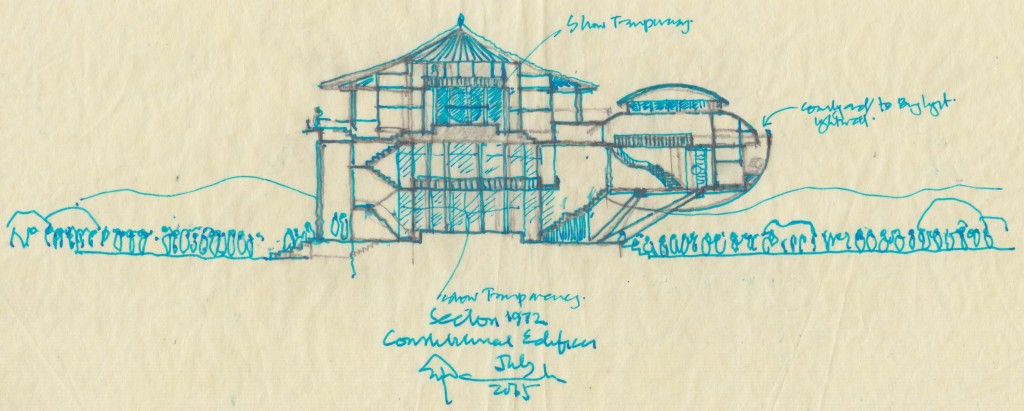“Hope to achieve political settlement through adoption of a new constitution. Don’t judge us by broken promises of past” says Foreign Minister Mangala Samaraweera at UNHRC in Geneva, on 14th September 2015.
The statement in September by Sri Lanka’s Foreign Minister provided a timely frame of reference to appreciate the ‘Corridors of Power’ exhibition. From the security guards at the venue of the exhibition to international constitution building process experts who gathered in Sri Lanka at the time around a workshop on constitutional reform, from students to academics and activists, ‘Corridors of Power’ even before officially opening to the public generated more interest than any project curated by Groundviews and the Centre for Policy Alternatives previously.
Led by the input of Asanga Welikala, in collaboration with Channa Daswatta, ‘Corridors of Power’ through architectural drawings and models, interrogated Sri Lanka’s constitutional evolution since 1972.
The exhibition depicted Sri Lanka’s tryst with constitutional reform and essentially the tension between centre and periphery. The output on display included large format drawings, 3D flyovers, sketches, and models reflecting the power dynamics enshrined in the the 1972 and 1978 constitutions, as well as the 13th, 18th and 19th Amendments.
To our knowledge, nothing along these lines was ever attempted or created before. In addition to the exhibits on display, each day featured a keynote presentation or panel discussion by eminent individuals, around the topic of constitutional reform in general. All the submissions, including the Q&A session, were recorded and are now available online.
Access them as a playlist here, or download each podcast / recording from here.
- Facebook event page
- Lineup of keynote speakers, including those from Government, respondents and panellists
- Note by Curator (Sanjana Hattotuwa)
~
22nd September, Designing the future: Plotting change, planning reform (Panel)
If architecture is a vector to interrogate the past, present and future, how can we architect (pun intended) a more just, equitable and democracy future? At its simplest, can the design of public spaces militate against social exclusion and resulting frustration spilling over into violence? Conceptually, what can be done to fully grasp Sri Lanka’s democratic potential post-war? To what extent can our future be engineered, and to what degree can this political, cultural, economic and social engineering accommodate multiple narratives, identities and competing ideas? Youth are often said to be the architects of a better tomorrow – but what role do they have in shaping the present? How should we look at the past, and yet not be held hostage by it? How can we imagine the future, not forgetting what we have been and done in the past? The avowed mission of the world renowned magazine The Economist, as noted in its pages, is to “take part in a severe contest between intelligence, which presses forward, and an unworthy, timid ignorance obstructing our progress.” How can this idea take root and find expression in our public life?
Senel Wanniarachchi
Deborah Philip
Ruki Fernando
Krystle Reid
Moderator Amjad Mohamed-Saleem
